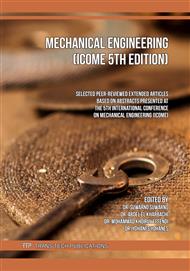
This study aims to overcome decreasing cooling tower efficiency at Geothermal Power Plant Kamojang Unit 1. Based on visual observations, there has been a tendency to blockage in the cooling tower's film fill and nozzle areas by mud, sulphate, scale, biofouling, moss, and other impurities. As a coolant, the water quality from the cold basin cooling tower has an essential role in determining the cooling tower performance. Preliminary test results show that cold water from the basin cooling tower contains high sulfate ions and bacteria than typical values. For this purpose, laboratory-scale demineralization with ion exchange is designed for sulfate ion treatment and sodium hypochlorite injection to reduce the bacterial height and validate the treatment, heat transfer, and cooling tower efficiency calculations before and after treatment. The results showed that with demineralization, sulfate levels from 224 ppm to < 5 ppm, and sodium hypochlorite injection, the optimum injection concentration was 2 ppm, from 19000 CFU/ml, it could reduce bacteria to 100CFU/ml. Finally, the improvement in cooling tower efficiency before and after treatment was 17.36%.
You might also be interested in these eBooks
Info:
© 2023 Trans Tech Publications Ltd. All Rights Reserved
[1]
Cloete T.E., Jacobs L., Br. Ozel VS.: The chemical control of biofouling in industrial water systems. Biodegradation (vol 9), 23–37 (1998).
Google Scholar
[2]
Can I.B, Bıçak Ö., Özçelik S., Can M. and Ekmekçi Z.: Sulfate Removal from Flotation Process Water Using Ion-Exchange Resin Column System. Hacettepe University: Department of Mining Engineering, Beytepe (2020).
DOI: 10.3390/min10080655
Google Scholar
[3]
Volschenk Mercia.: Characterization and Development of Antifouling Coatings for Metal Surfaces in Aquatic Environments, Thesis, Master of Science. Stellenbosch University, Stellenbosch (2014).
Google Scholar
[4]
Albloushi M.A.: Biofouling Control of Industrial Seawater Cooling Towers, Dissertation, Doctor of Philosophy. King Abdullah University, Saudi Arabia (2017).
Google Scholar
[5]
Gerritse J., Huurne P.T.: Biofouling Potential Reduction of Wastewater Treatment Effluents Through Biofiltration with Denutritor. The European Union's 7th Framework Programme (2011).
Google Scholar
[6]
Hidayat I., Kuntoaji M., Falah D.N.: Increased Generation Performance by Using Sulfur Dispersant in the Cooling Tower at The Wayang Windu Geothermal Power Plant (A Lesson Learned from Wayang Windu Geothermal Power Plant Operation). GRC Transaction, Vol. 40 (2016).
DOI: 10.3390/en12224269
Google Scholar
[7]
Yu F. Philip, L Dewayne G. and William F. M.: Cooling Tower Fill Fouling Control in A Geothermal Power Plant. One Nalco Center, vol 17(3-4). USA (1999).
Google Scholar
[8]
Japan Refrigeration and Air Conditioning Industry Association.: Water Quality Standard for Cooling water, Coldwater, Hot water, Makeup water. Japan. (1994).
Google Scholar
[9]
Masduqi A. and Assomadi A.F.: Operasi dan Proses Pengolahan Air, 2nd edn. ITS press. Surabaya (2019).
Google Scholar



